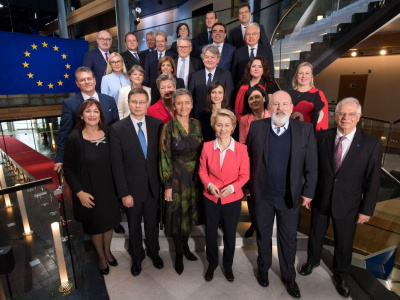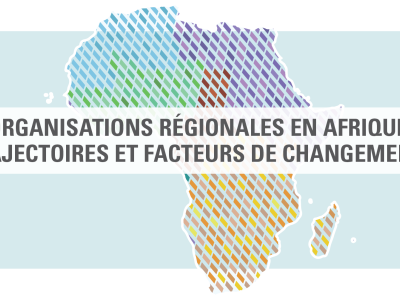
The Post-2015 Challenge for Development: A New EIB Instrument to take on Riskier Projects
As the post-Millennium Goals development agenda takes shape, the importance of ensuring adequate financing for development has been identified as a major issue. As UN Secretary General Ban Ki Moon said in August in his 500-day call to action, despite difficult budgetary circumstances the world must keep its financial promises. (1)
Providing modern infrastructure services, through strategic investments, and facilitating access to finance are essential to generate growth and employment, reduce poverty and improve the living standards of the poor. Today these are the focus of our activity in developing countries. By helping to mobilise private sector resources for viable projects, we can help leverage taxpayers’ resources to increase total investments materialised.
The European Investment Bank (EIB) – the EU Bank - has been active in Sub-Saharan Africa for more than fifty years, building up a wealth of experience. Our objective, as embedded in the EU’s “Agenda for Change”, (2) is to ensure that aid and investment in development are increasingly channelled where they are most effective and can provide measurable and sustainable long-term impacts.
We are pursuing this objective through an increased combination of our resources with aid – the loan-grant “blending” approach - to address market failures, target policy goals (e.g. access to infrastructure and financial services, notably for the poor) and strengthen knowledge transfer and capacity building through technical assistance.
When it comes to investing in Africa, the issue of risk is pervasive. The appetite for investment on the continent is growing, but in order to sustain this momentum, measures towards mitigating the many aspects of risk, real or perceived, are essential. This is why we are working closely with the European Commission and other financing institutions to examine how the multiplier effect of ‘blending’ to lend and invest in Africa, could be strengthened, by further catalysing private sector resources.
In Africa, the traditional conduit for EIB activity has been the Cotonou Investment Facility, established in 2003. (3) It has so far provided over €4 billion in funding for well over 200 projects. Under this Facility, we have supported local entrepreneurs and smaller projects through mutually beneficial partnerships with local banks, microfinance institutions and private equity funds. Our engagement across African countries has helped strengthen the local financial sector both technically and financially and ultimately contributed to better access to finance. One such example is the Private Enterprise Finance Facility in East Africa (4), where we work with approximately 20 intermediaries supporting SMEs and microfinance.
We have also transferred the knowledge gained from our activity in Europe to infrastructure investments in energy, water, transport and telecommunications that have delivered national benefits, and also improved regional cooperation. Recent flagship projects include the 30 MW Cape Verde Wind Power project, the modernisation of air traffic security with ASECNA, a regional body covering 17 sub-Saharan countries, as well as sub-Saharan Africa’s largest renewable energy project to date - the 300 MW Lake Turkana Wind Farm in northern Kenya.
Indeed, economic concerns are challenging public and private investment in most countries and the European Investment Bank is increasingly called upon to reinforce its role. The track record and wide experience demonstrated by the Bank’s support for projects around the world has helped address investment gaps, improve the business environment through better infrastructure and ensure more fruitful and effective cooperation with other sources of finance in African states.
But now we want to go further. A new half billion euro endowment – the ‘Impact Financing Envelope’ - under the Facility, will notably allow us to step up our engagement in the private sector in riskier areas (e.g. agriculture) and more difficult countries (e.g. fragile states) and towards under-served segments of the population. Impact financing will thus support projects with higher development impact whilst bearing the higher risks. One avenue currently being explored is investment in Social Impact Funds.
In the infrastructure sector, investment in energy – widely recognised as a key element to unlock economic growth in Africa – is one of our top priorities. We are working closely with the European Commission on a coordinated EU response to the UN’s Sustainable Energy for All Initiative (5), involving the development of innovative financing instruments for catalysing private sector investment into renewable energy, energy efficiency and access to energy.
Looking ahead, we intend to scale up our lending under the Investment Facility to increase the promotion of private sector investment, including public private partnerships for infrastructure. We will also increasingly draw on the experience we have gained across different European markets to deploy innovative financial instruments which stimulate economic and social development through the projects we support, thus effectively reducing poverty.
The Cotonou Investment Facility has been recognised as a unique risk-bearing instrument to finance higher-risk investment in support of private sector development. To date, it has enabled the re-cycling of scarce EU funds, and is reaching the initial aim of becoming a self-sustainable instrument. The new Impact Financing Envelope ensures that the EIB can continue to make a valuable contribution to the post-2015 development agenda.
Werner Hoyer is President of the European Investment Bank.
Footnotes




